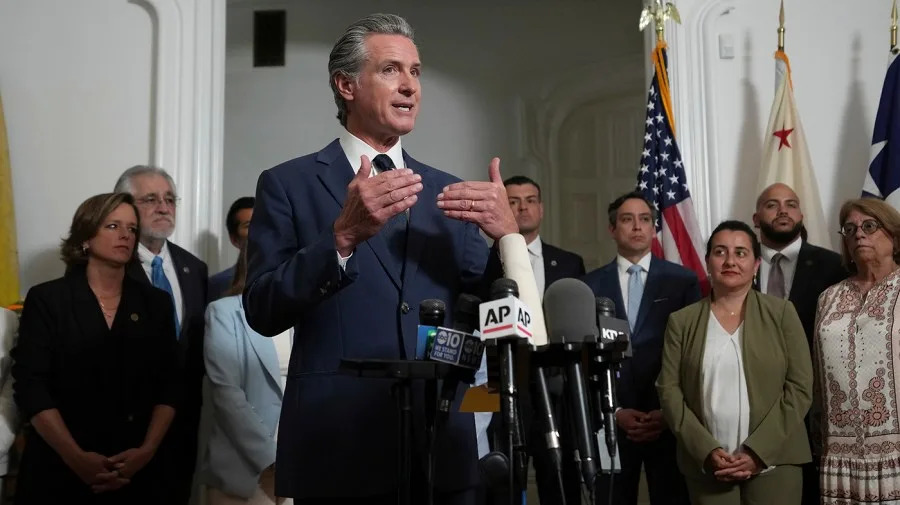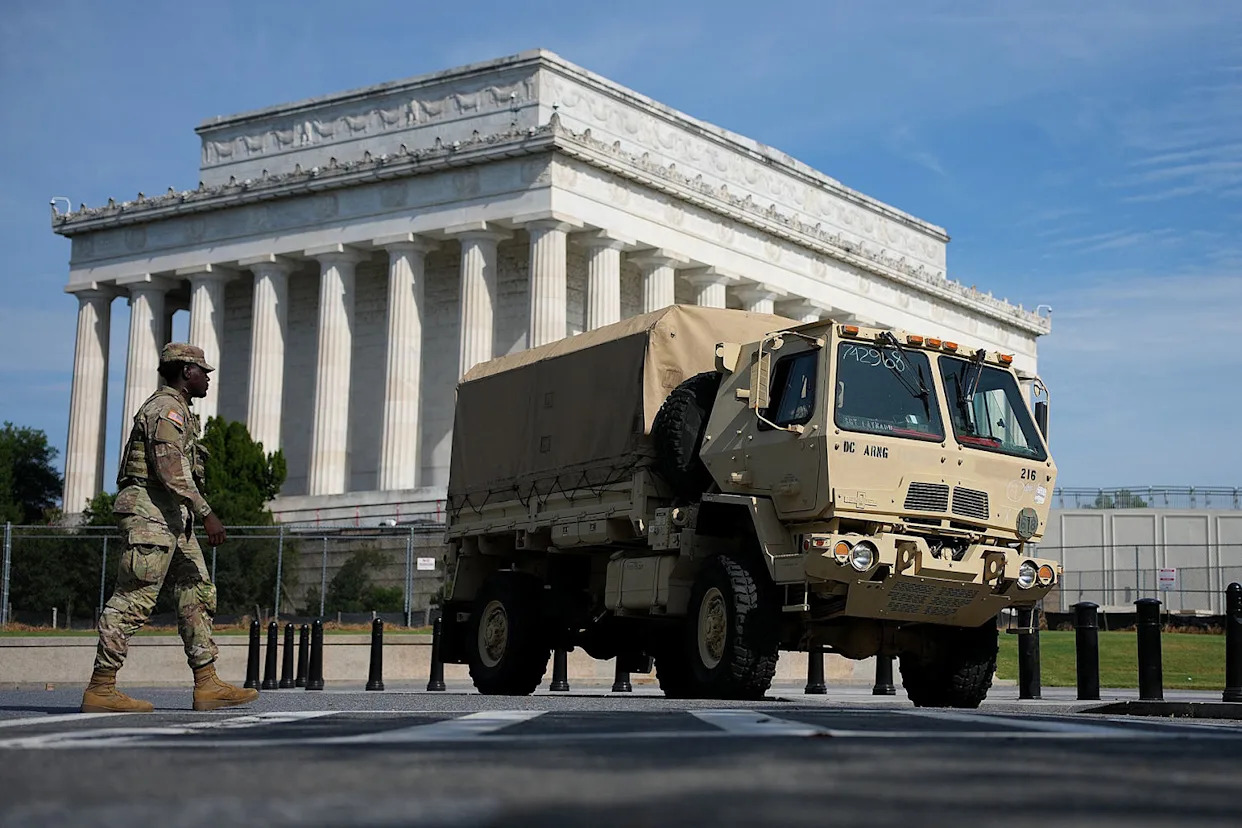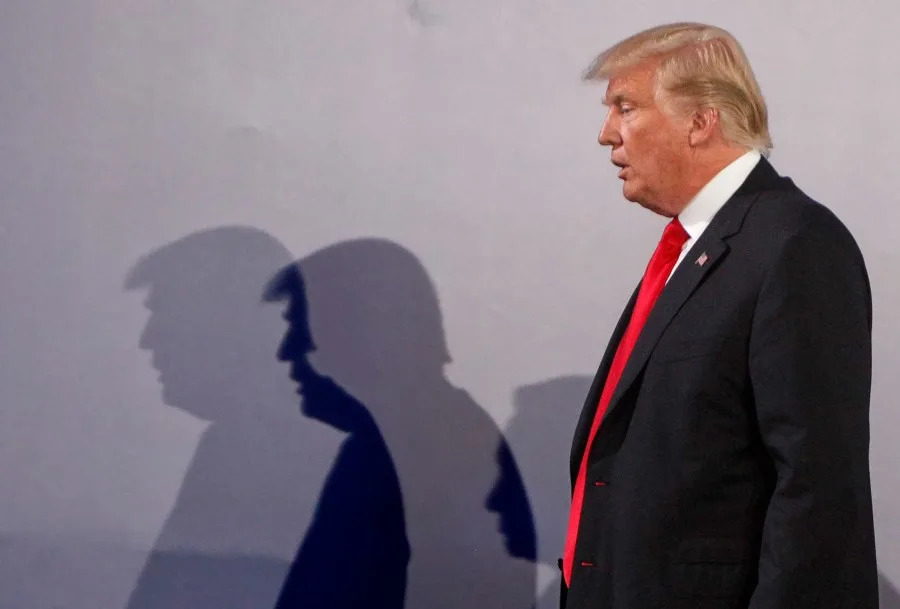Over 30 years ago, Paul Mitchell was an energetic community college student who smelled of patchouli oil and wore hair so long he could “tuck it into his back pocket.” Last week, he became the most powerful person in California politics.
A student government campaign innovator turned legislative staffer turned political data nerd, Mitchell was tapped this summer by the state’s Democratic leaders to engineer Gov. Gavin Newsom’s brazen attempt to match Texas’s mid-decade partisan gerrymander of its U.S. House map with one that gives Democrats offsetting gains in California.
Newsom’s cause will require many hands to be successful: lawmakers to muscle a constitutional amendment through the Legislature in mere days, attorneys to ward off incoming litigation and campaigners to pitch the concept to voters this fall. But it is Mitchell’s hand that currently faces the heaviest task — drawing the maps whose warped new districts will deliver on Newsom’s promise to create five new Democratic members of Congress.
To pull it off, Mitchell has to juggle a variety of competing political interests and legal obligations. There is the Voting Rights Act, which requires racial and ethnic minorities to be represented equitably. There are the Democratic House incumbents, wary of losing a grip on their districts, and the ambitious state legislators who may want to challenge them.
Mitchell is one of the rare few in the state with the skills to execute what is now a lost art — using technology to carve California’s natural and human geography into electorally useful units — and those who know him say he is uniquely suited to weather the pressures that accompany it. As vice president of California’s most venerable vendor of voter data, the 55-year old Mitchell has now worked for just about everyone in California politics, growing inured (or at least accustomed) to pressure from left and right.
Those maps, which are being released publicly as soon as Friday, disregard an independent redistricting system enshrined by California voters. They will likely raise outrage from the left and the right, progenitors of a hundred-million-dollar political proxy battle between Newsom and President Donald Trump. Beneath a high-minded debate about principle and propriety will sit Mitchell’s handiwork, the bizarre and distorted lines that could determine control of Congress.
“All Californians are being asked if you want to set aside the values you believe in,” Mitchell said in an interview. “Am I doing something that I wished we weren’t being forced into? Absolutely.”
“But I also think I’m uniquely able to do this well.”
‘Who the hell is this guy?’
Long before Mitchell was tapped as California’s wizard of redistricting, he was a late-blooming student at Orange Coast College in Southern California in the early 1990s, a self-described “stoner” screw-up trying to keep up with his older brother Brian who earned straight As.
So Paul decided he would emulate Brian — who wanted to get into politics. After enrolling in Orange Coast in his early twenties, Mitchell enrolled in political science courses, interested in learning about elections, government, and voter behavior work. But he also signed up for calculus, in large part because his brother had taken it.
“That got me really into the politics and the math of everything,” Mitchell said.
He built a reputation for his relentless energy and work ethic, pairing political creativity with an interest and aptitude for applying campaign tools to student-government races. He carried around a laptop as early as 1993, plugging into ethernet jacks at Sacramento hotels to get online at student advocacy conferences.
“He was doing stuff that the secretary of state’s office couldn’t keep up with,” said Mike Madrid, a Republican consultant who first met Mitchell in 1993. “He saw the future.”
As the president of the California Student Association of Community Colleges in 1994, Mitchell convinced then-Sen. Hilda Solis to author a bill creating a common course-numbering system. He then hired buses to bring students to Sacramento to lobby legislators, ultimately getting the bill signed by Gov. Pete Wilson.
Mitchell’s indefatigable, political-junkie approach to work contrasted wildly with his aesthetic. He smoked a pack of Marlboro Reds a day and, recalled a longtime friend, would “only occasionally wear shoes.” Once on a flight to Sacramento, he arrived at the airport with his luggage packed in a black trash bag.
“When I first met him, I was like, ‘Who the hell is this guy?’” said Dustin Corcoran, the current CEO of the California Medical Association, who first met Mitchell in college. “But as I got to know him I found he was incredibly intelligent and creative and hardworking at a level I had never seen before.”
After transferring to American University in Washington, D.C., and earning a degree in communications, legal institutions, economics and government, Mitchell idealistically began working on campaigns out of college. He interned in 1998 with Al Checchi’s famously profligate campaign for California’s Democratic gubernatorial nomination, but never loved the work. Mitchell said he was distressed by the cycle of investing in someone’s hopes and dreams only to watch them fail. He felt like he was failing with them.
Data, he found, was more consistent. Mitchell worked as a legislative staffer for Democratic Assemblymember Nicole Parra and later in leadership roles for an educational non-profit called EdVoice. It wasn’t until 2010 that he would find his real niche in California politics, founding a firm called Redistricting Partners at the behest of Christopher Cabaldon, a Mitchell mentor now serving as a Democratic state senator.
First hired by community college districts to help set their boundaries, Mitchell grew Redistricting Partners into a full-fledged business sought out by dozens of counties, cities, special districts and even New York state. He established a flavor of map-making that was heavy on community input and public engagement. To him, redistricting was an iterative process of draft maps and discussions with community organizations.
Mitchell had arrived in Sacramento as a strong Democrat with an activist mentality, but his views began to shift as he matured and built relationships on both sides of the political aisle. In 2012, he joined Political Data, Inc., whose effective monopoly on California voter information put Mitchell in a position to work with politicians of all stripes. He took pride in being able to sit down with the chairs of the Republican and Democratic parties and offer objective data tools.
“They see me as the data guy,” Mitchell said. “I’m just part of the furniture.”
With time Mitchell became less of a partisan and more of an “institutionalist,” he said. His long ponytail has been replaced by a modest crew cut, the Marlboro Reds with bicycle races. He became a sage voice for California politics on TV and in the press. When Political Data, Inc. announced in 2021 it would work only with Democrats and left-leaning groups, Mitchell was actively peeved by the move.
Such has been Mitchell’s approach for the past 15 years. In Sacramento, his data, and his approach, was seen as above reproach. That may not be the case soon.
“I had never done a partisan redistricting,” Mitchell said this week. “Until just now.”
An outdated skill
Last month, Newsom suggested rushing the type of partisan redraw that California hasn’t seen in decades. The move first seemed an apparent feint by Newsom, an occasion to position himself as a defender of democracy while Texas Republicans looked to gerrymander their own state and add more safe Republican seats to Congress. Many observers saw the move as an example of Newsom’s political ambition, emblematic of his desire to serve as the prime public antagonizer to Trump and the Republican party.
But by late July, the idea quickly shifted from concept to reality. Newsom rapidly brought skeptical lawmakers on board with the idea and sketched out a plan to move the process forward in August. Next week, lawmakers will return from summer recess to move a constitutional amendment that would allow the Legislature to draw new maps through the legislative process, and ultimately before voters.
By the time Democrats had committed to this path, there was hardly anyone else left in California right for the job. For decades, the capacity of the state’s Democratic poobahs — notably, brothers John and Phil Burton — to apply modern technology to gerrymandering was the stuff of lore, feared and revered in equal measure.
As part of a backlash to their backroom machinations, California voters in 2008 passed Proposition 11, which wrested responsibility for drawing state-legislative districts from lawmakers themselves and assigned it to a newly established independent redistricting commission. Two years later, voters approved another ballot measure that extended the commission’s authority to the state’s U.S House map. Over just a few years, good-government reformers had made partisan cartography obsolete in California.
Today, few in the state beyond Mitchell still have the gift. But for a man who built his reputation drawing non-partisan maps for counties and colleges, it is a dramatic mid-career shift to use his powers to develop dramatically skewed state maps as part of a national political debate.
But Mitchell set to work, pairing specialized mapping tools with census, voter and geographic data to “pack” and “crack” voters in combinations expected to maximize the likelihood of Democratic victories in 2026 and beyond. With little time to complete the job, friends described Mitchell as locked into a flow state, so “obsessive” in his work that he would forget his lunch in the microwave, lost in maps and numbers.
Those maps will now come under scrutiny from all sides. Good-government groups that helped implement California’s redistricting commission will say two wrongs don’t make a right. Republicans will accuse Mitchell and his Democratic backers of hypocrisy. County leaders may claim established political communities are being thoughtlessly chopped up, as civil-rights activists argue that hard-won advances are tossed aside for short-term partisan gain. Democrats may worry that maps drawn off Trump-era voting patterns might fail to predict future outcomes.
“I think it started as an idea that would gain traction to intimidate Texas, as opposed to a smart, well thought out strategy,” said Steve Maviglio, a Democratic political consultant based in Sacramento. “But this is not good long-term governing.”
Critics on all sides might question the motives of the mapmaker himself, who stands to profit by drawing new district lines with one hand and then using the other to sell data to politicians on their new constituents. Having shed the skin of a young partisan, Mitchell will have to find what remains of it as he seeks to defend his products.
Mitchell insists his maps follow all the various guidelines of the citizen’s commission, which require districts to be continuous and geographically compact, among other provisions, only disregarding one rule that asks maps not to disadvantage a political party.
And he defends the project as temporary, pointing to a loophole that Newsom and his team appear to have written into the constitutional amendment they aim to put before voters on Nov. 4. The maps Mitchell has created are only entirely nonpermanent, he insists, with the power to draw maps returning to the commission in 2030.
That degree of hairsplitting may be difficult to sell to voters, who recent polls show to be skeptical of putting maps back in the hands of the Legislature.
“I have no doubt that what Paul will come out with will be the most advantageous, politically defensible, legally defensible and airtight maps that anybody in California can produce,” said Madrid. “But I don’t know if he’s the right person to say this is what’s best for California and the country.”






Comments